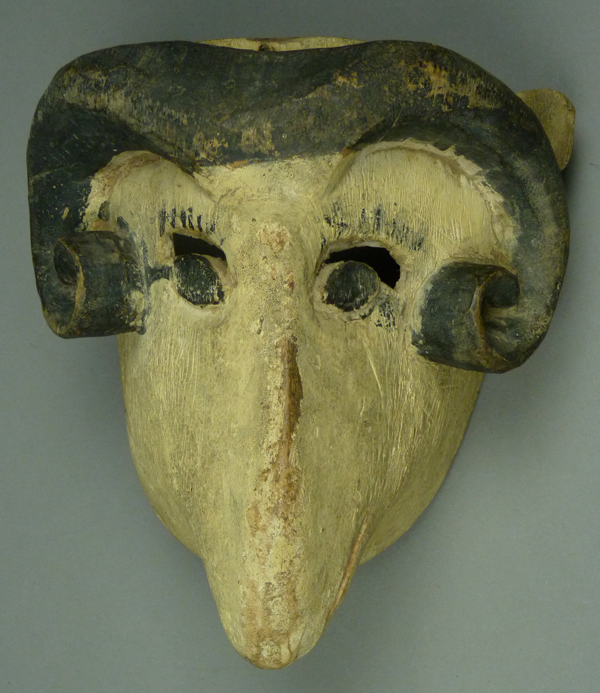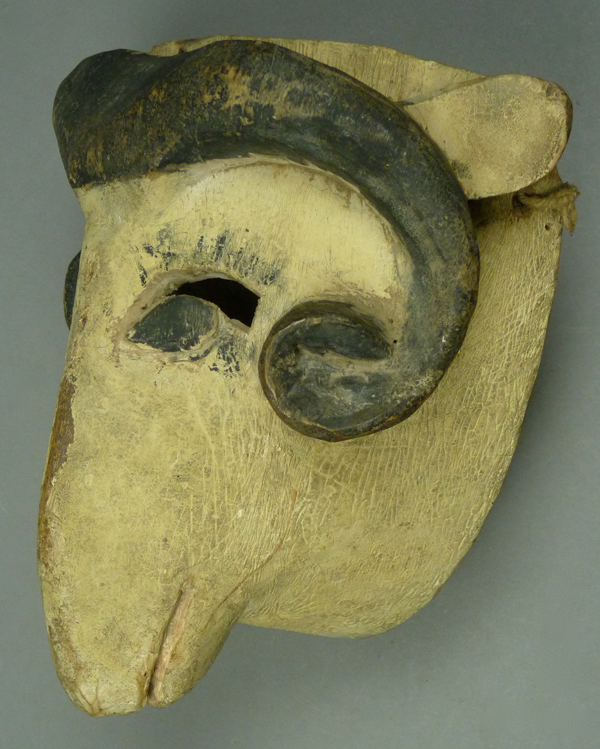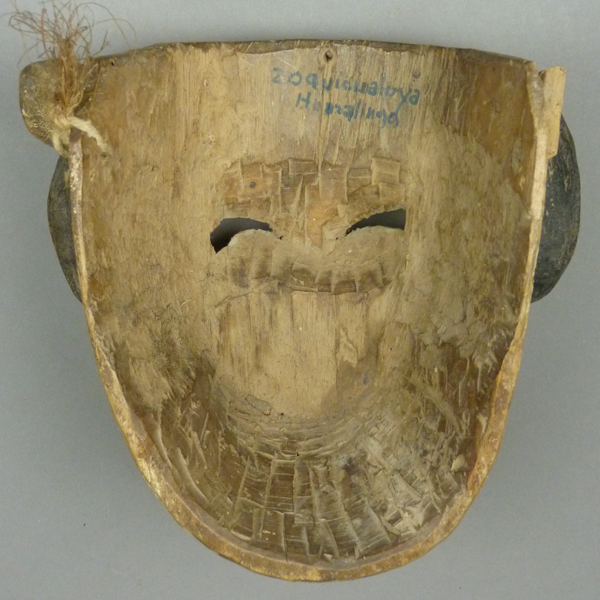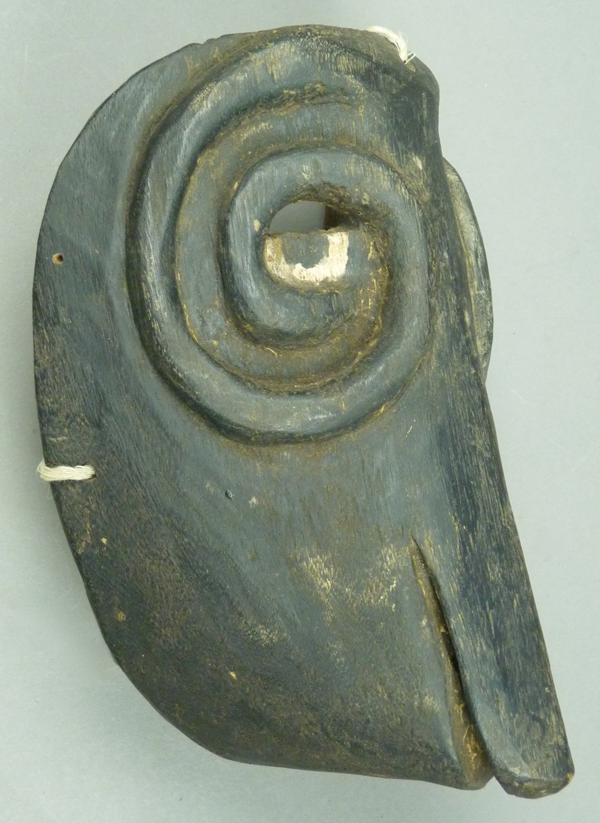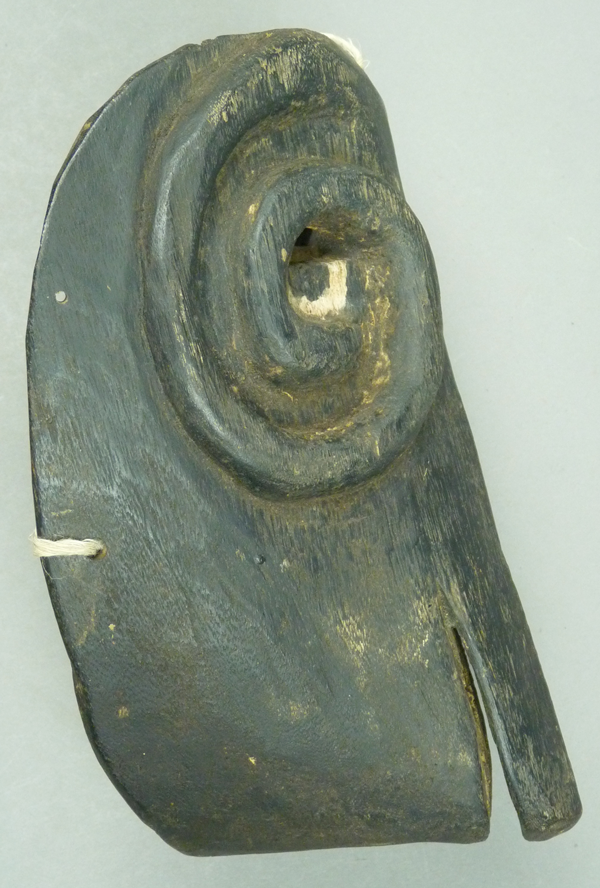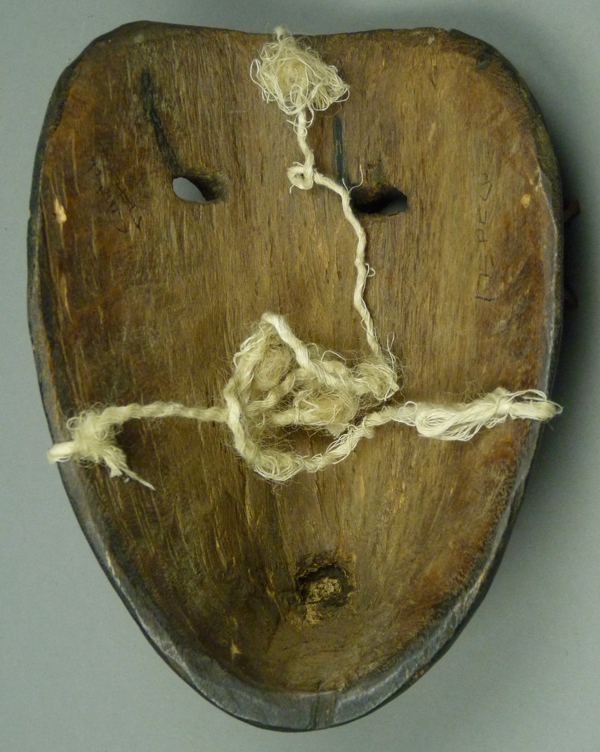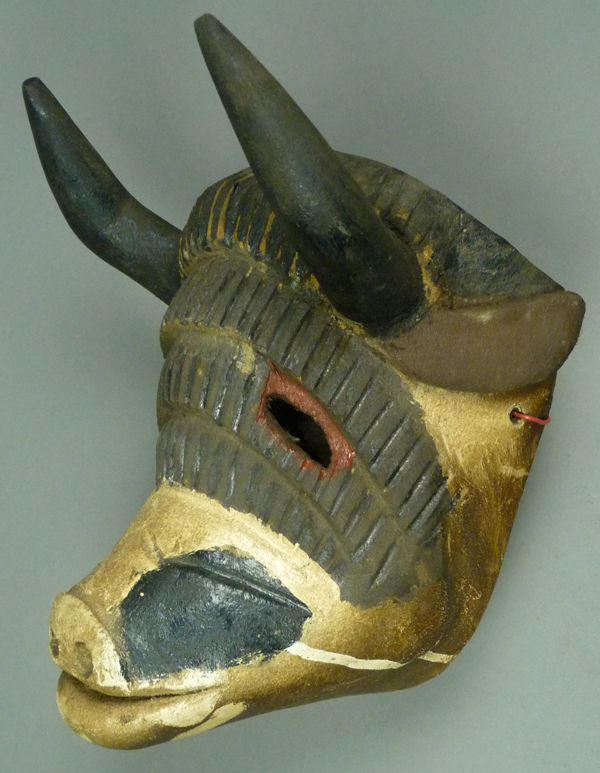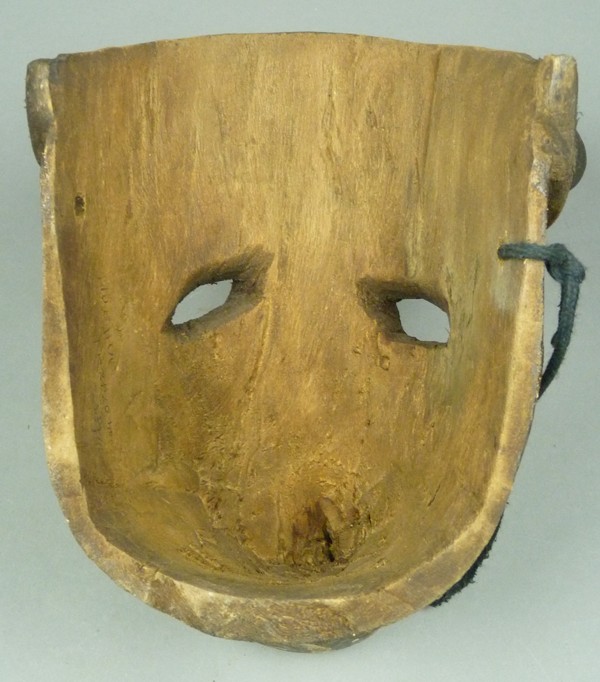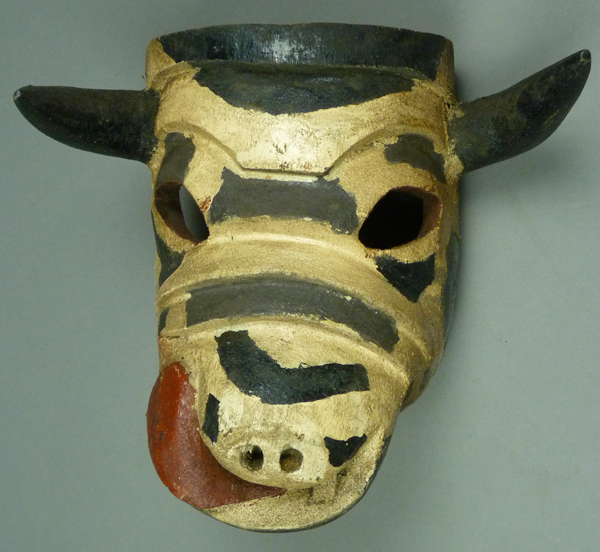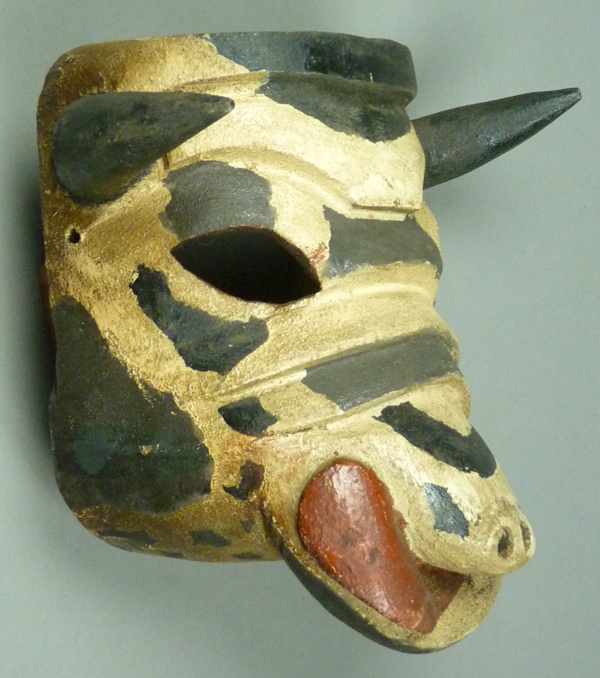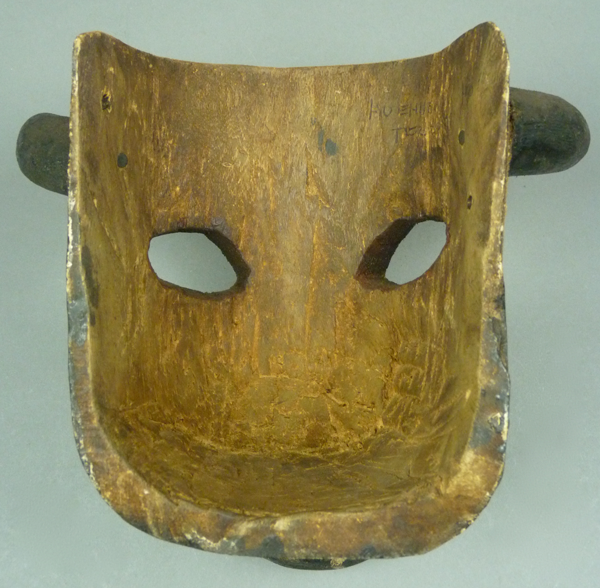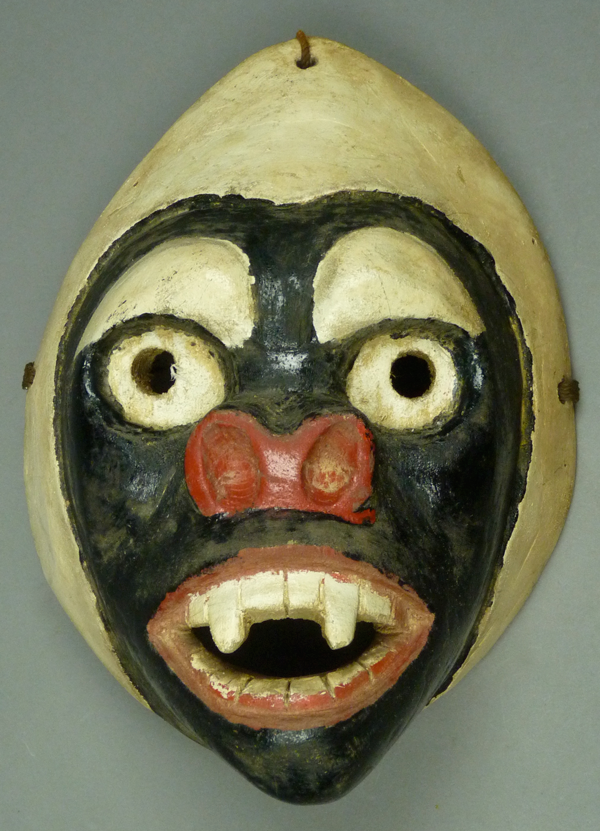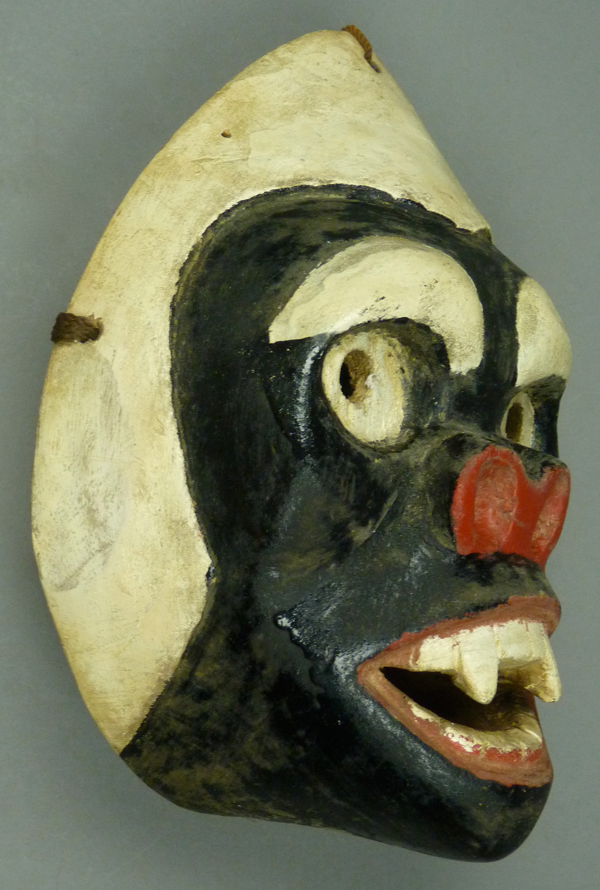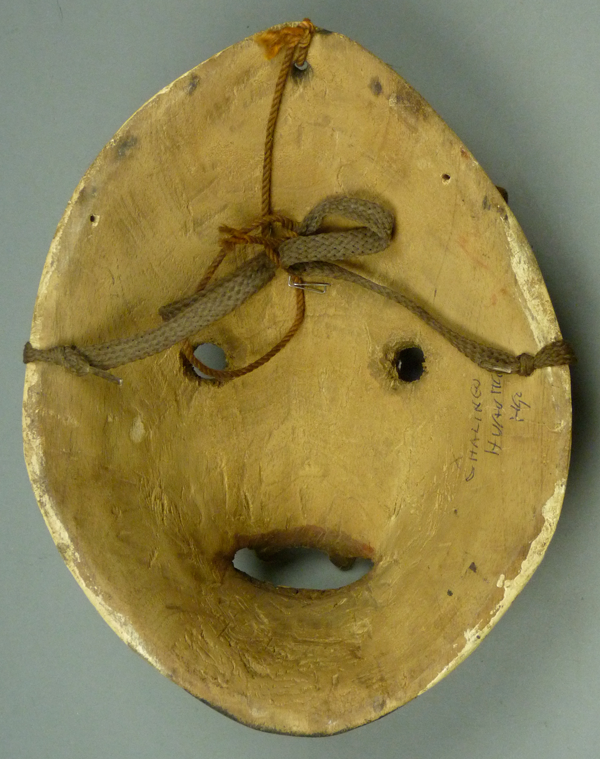In last week’s post I introduced you to animal-faced masks that are probably used interchangeably between the Xantolos celebration during Todos Santos (All Saints/ All Souls) and the celebration of Carnaval (Mardi Gras). Here are some more of these animal Xantolo masks. As you will see, some were designated at the time of collection as Xantolo (or Chantolo) masks, while others were said to have been danced in Carnaval. The first two represent goats or rams.
I bought this ram mask from Jaled Muyaes and Estela Ogazón in 1997. It was identified as a Xantolo mask from Zoquicualuya, in the Municipio of Huazalingo, Hidalgo.
This is a dramatic mask, with the curling horns carved in high relief. The paint is cracked with age.
There are also relief-carved ears. The mask is 8 inches tall, 7¼ inches wide, and 4½ inches deep.
The back demonstrates differential staining, a desirable sign of wear.
I obtained the second goat mask from Jaled Muyaes and Estela Ogazón, in 1998. On the back of the mask someone had written “Carnaval, Tepeco,” (Hidalgo). Tepeco is near Huejutla de Reyes, Hidalgo.
This less formally carved ram mask has a droll and mischievous expression. Observing a Carnaval dance in Oaxaca, I recall a dancer with a similarly comic mask who repeatedly poked me playfully until I gave him a few coins.
The opening for the mouth was probably cut with a saw.
This mask is 8 inches tall, 5½ inches wide, and 3½ inches deep.
The back smells smoky. There is significant staining from use.
Next we will look at two bull Huehue (Xantolo) masks. I got both at the same time from Jaled and Estela, in 1998. Here is the first, found in Tezozómoc, Hidalgo.
This carver’s style is distinctive. I have not seen other Xantolo masks with these carved wrinkles.
This mask is 11 inches tall, 7½ inches wide, and 5inches deep.
The back demonstrates moderate wear, although this is not so apparent from the over-illuminated photo. To the left of the left eye is written “Huehue.”
The second bull mask, which appears to be by the same carver as the first, has a slightly different design. It too was said to be a “Huehue” from Tezozómoc, Hidalgo.
I like the layered wrinkles on the face of this mask, and the vivid relief-carved tongue.
This mask is 9 inches tall, 9 inches wide, and 5 inches deep.
This mask has considerable darkening from use; the actual appearance of the back of the other bull is similar to this. You can read “Huehue” above the right eye.
I got this Monkey Xantolo mask from Jaled and Estela in 1999. On the back is written “x [for Xantolo], Chalingo, [Municipio] Huautla, Hgo [Hidalgo].”
Note the nicely carved details of the monkey’s face—the brows, eyes, nostrils, and teeth.
This mask is 8¾ inches tall, 6¾ inches wide, and 3½ inches deep.
There is good evidence of use.
Next week I will show one more group of Xantolo masks with animal faces.

